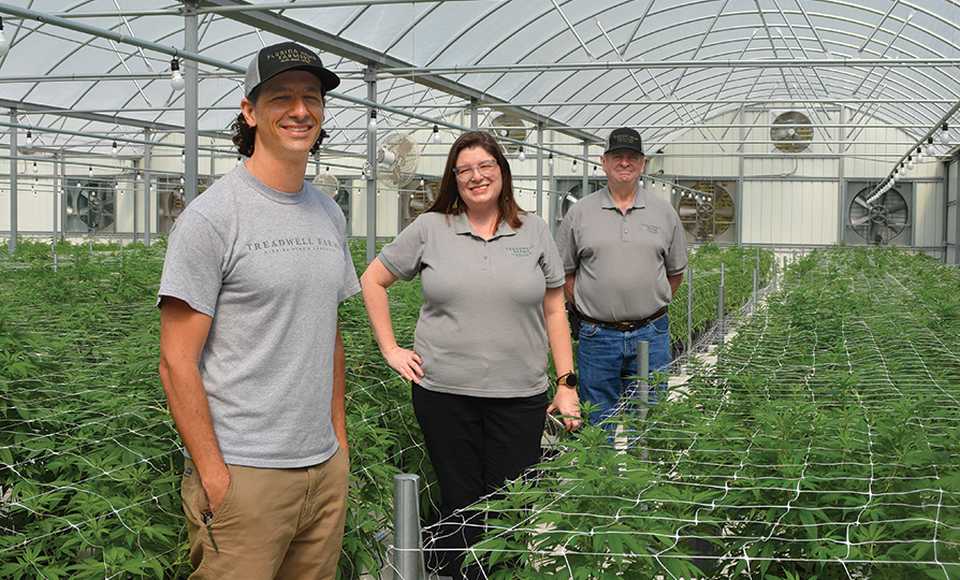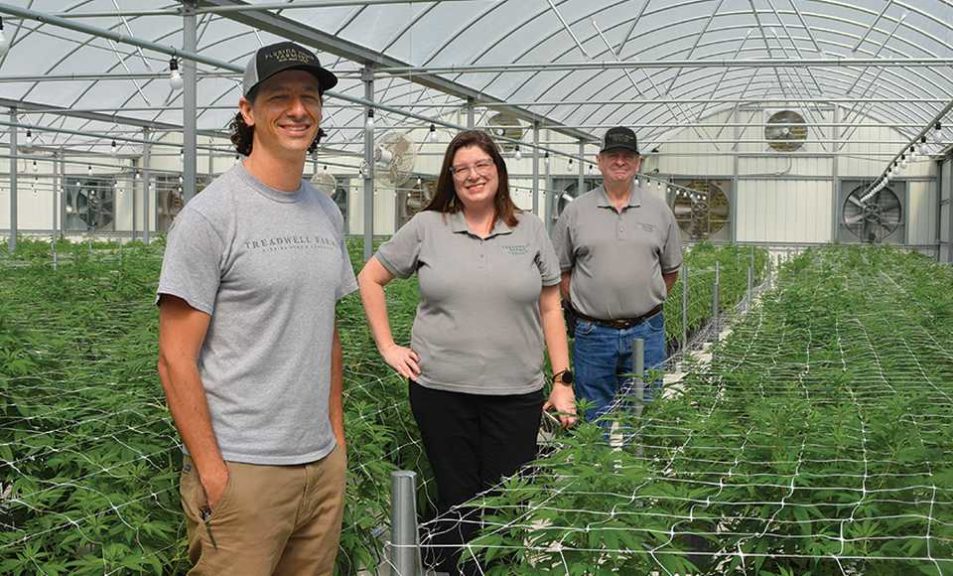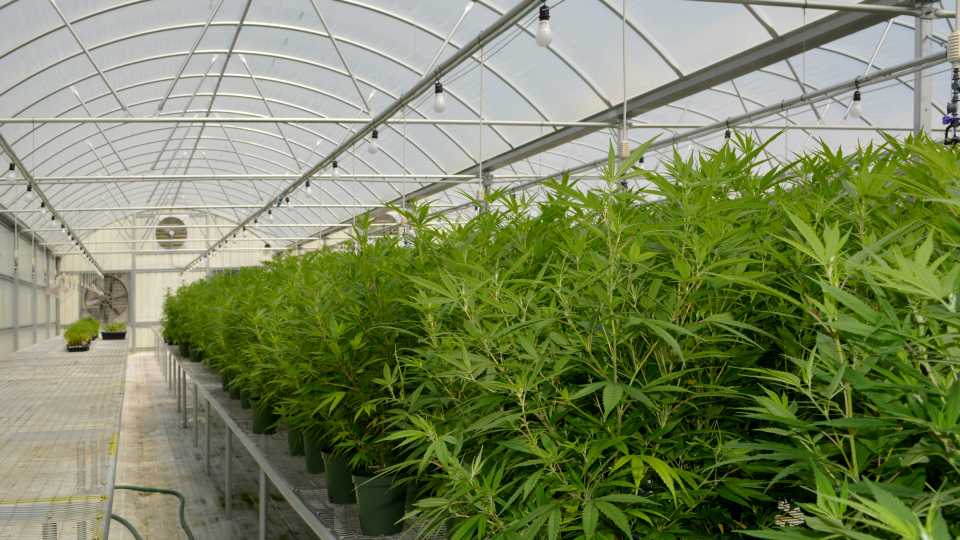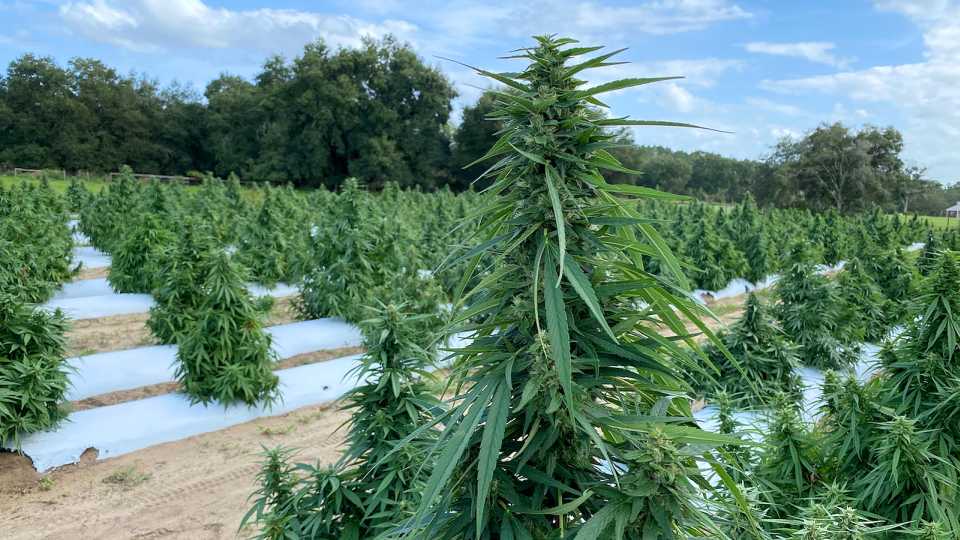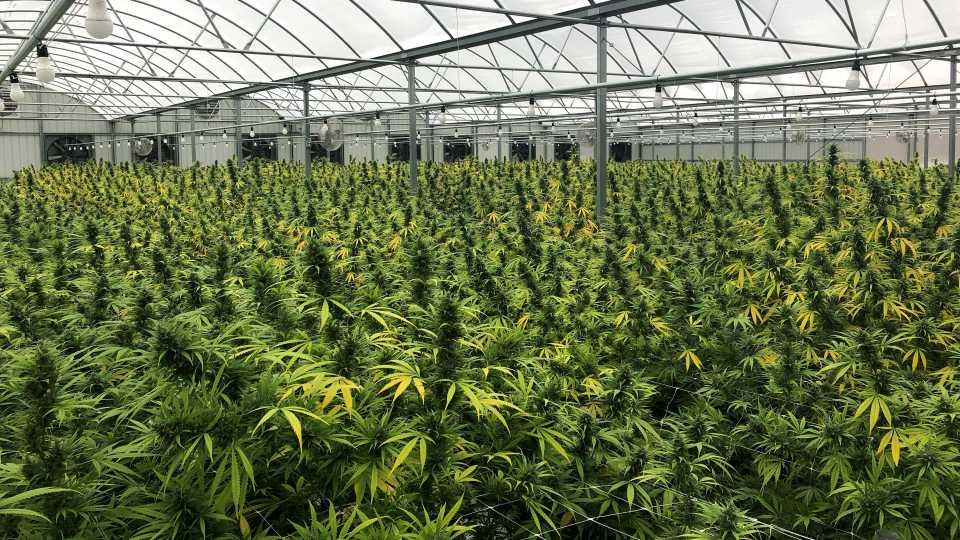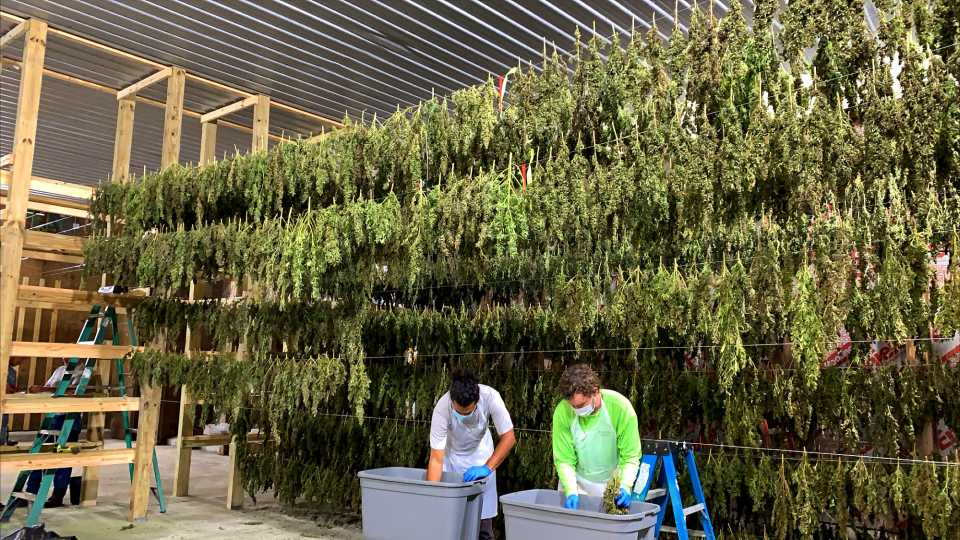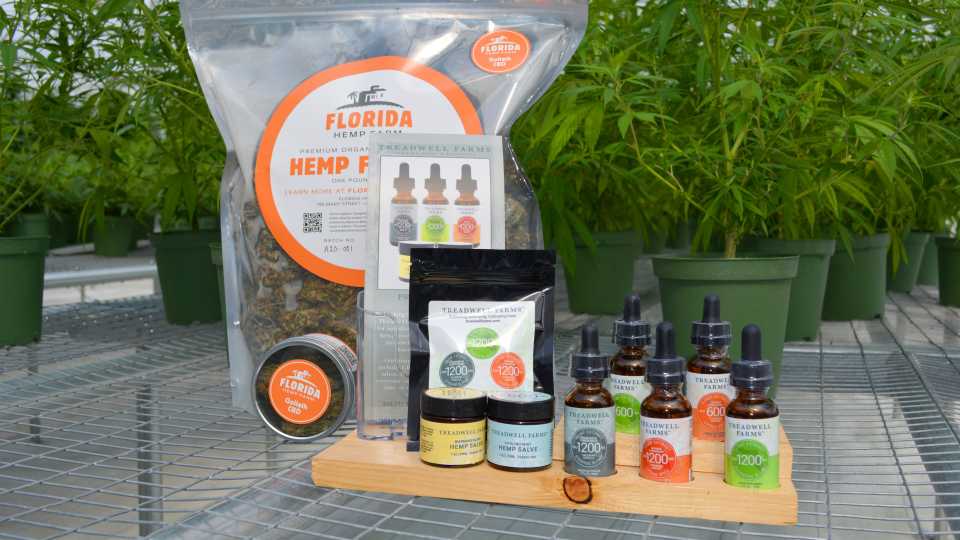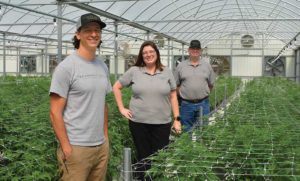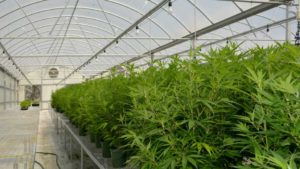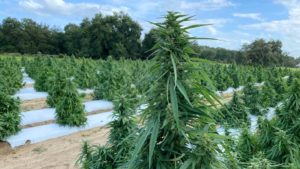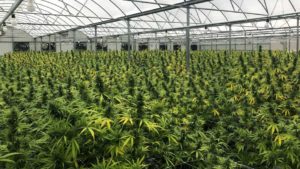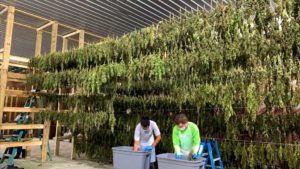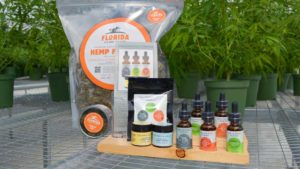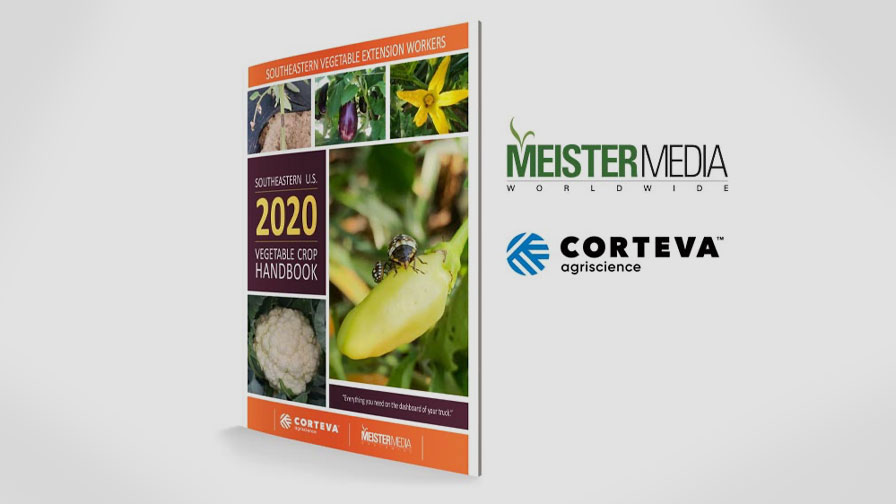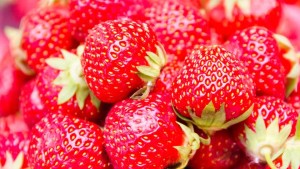How Treadwell Farms Is Taking the Lead on Hemp in Florida
The fledgling Florida industrial hemp crop will celebrate its first birthday this month. The Florida Department of Agriculture and Consumer Services (FDACS) began permitting growers to cultivate the low-THC/high CBD version of the cannabis plant in April 2020.
A lot has been learned in that time, but there’s much more to understand as the hemp sector moves into the future. To date, FDACS reports that nearly 30,000 acres of the crop have been licensed to grow in the state.
The Treadwell family, based in Umatilla, know as much about growing the cannabis plant in Florida’s environment than just about anyone. While the state’s hemp industry is only a year old, Glen and Jammie Treadwell, father and daughter co-owners of Treadwell Farms, have been studying the plant for years.
There are a lot of expectations surrounding the crop, but reliable, real-world information about hemp’s performance in Florida is still being developed. The Treadwells have grown into a leadership position of helping other farmers and sharing all they’ve learned in their travels and study. As their company slogan notes: “No hype. Just hemp.”
Their journey learning about growing cannabis started when medicinal marijuana was approved by Florida voters in 2014. The Treadwell family had been growing ornamental plants for generations. They felt the plant held potential for important treatments for ailments like epilepsy and other conditions.
While they did not secure a license to grow medical marijuana initially, they did secure a permit later. In the meantime, the family traveled to Israel to learn about cannabis. Jammie Treadwell also traveled to Oregon to learn, and then went to work with a farm located there to help them grow the crop.
When Treadwell Farms received its medical marijuana permit, Jammie returned home to grow the plant with her father. After five successful grow cycles in their nursery, the family and its partners had an opportunity to sell their permit, which they did. This all unfolded as the farm bill allowed hemp cultivation and the state gave the crop a nod in
the legislature.
Enter Hemp
While Treadwell Farms was among the first to apply and receive a license to grow hemp, its experience with the crop was not new. The farm cooperated with Sunshine Hemp and the Florida Agricultural and Mechanical University (FAMU) hemp pilot project as one of its growing sites. Another pilot program is being conducted by UF/IFAS. In cooperating with FAMU, the Treadwells were able to see genetics and growing practices in advance of permitting.
“We like to do our research and then move,” Jammie says. “Our travels to Israel and growing out in Oregon were all about building our knowledge. As hemp permitting got closer, we were getting nervous because much of the expertise was not from Florida. So we felt we had a role to play to help Florida hemp farmers be successful by sharing what we’ve learned.”
While the outside experts had valuable information to share, Jammie says Florida’s environment and growing conditions are so different that some things don’t translate into production. Last year, they worked with 10 other Central Florida growers to establish Florida Hemp Farmers. Jammie describes the group as a collective of like-minded growers who are dedicated to producing hemp and promoting the industry through advocacy, education, and training.
“These farmers were able to come along with us through this first year of growing,” she says. “We provided training seminars, visited their farms, and shared information on growing among ourselves. We also were able to purchase from these growers to supply our CBD processing facility in Umatilla.”
Glen adds that all the growers in the group had a successful first year. Production ranges from outdoor to controlled environment greenhouse to shade house.
“What is unique is that we have experience in growing in all of these environments and are willing to share the knowledge,” he says.
Glen adds that the goal is to produce fall and spring crops outdoors. In a greenhouse, about four grow cycles can be achieved per year.
“We have the unique ability here in Florida to produce multiple crops, which is going to allow us to have fresh hemp flower (the bud that contains the CBD) when it’s not traditionally available on the market,” he says.
Good Genetics
Probably one of the biggest learning curves the industry faces is selecting the right varieties of hemp for various planting scenarios. Glen says there are about 25 seed/hemp dealers in Florida, but growers are getting inundated by out-of-state suppliers.
This year, Treadwell Farms will be selling seedlings and rooted cuttings to growers. They have partnered with Sunbelt Hemp and The Hemp Mine to source genetics. Seven varieties will be available. Those seven varieties have passed various field trials and required certifications. And, as Jammie says, they have passed the ultimate real-world test of being successfully harvested and sold by Florida farmers in the past year.
“We have tested 30 different varieties of hemp, and what stood out is that the Southern genetics are superior for our environment,” Glen says. “The Western genetics are great and more sophisticated, but we’ve found they just are more susceptible to problems when compared to the Southern varieties due to the environment.”
Production Considerations
Florida hemp faces pest pressures from the usual suspects found in many other crops. Armyworms, whiteflies, mites, thrips, and aphids can show up in plantings. To help with growing, Treadwell Farms works with a certified plant doctor, Dr. Javier Garces. Garces also is a Professor and Program Chair of the Plant Sciences and Agricultural Technology program at Valencia College.
In the Treadwell Farms greenhouse, Garces believes in the use of biological approaches for pest control to enhance plant nutrition. He stresses the important role of fertilizer programs in all production systems.
“In our outdoor production, we are putting down a base nutrient application in the bed based on soil testing,” Garces says. “Then we will feed the plant through fertigation or foliar nutrients based on plant tissue analysis. We are listening to what the plants tell us they need through tissue analysis whether growing indoors or outside. It is important to keep these plants properly fertilized because they are less susceptible to pests and diseases when they are well fed.”
In the greenhouse, Garces uses small amounts of slow-release fertilizer in the liners that plants are grown in. Plant tissue analysis dictates subsequent fertigation.
By far, the biggest disease pressure comes from Botrytis due to Florida’s humid environment. Airflow in greenhouse production is a big deal to avoid a problem.
“If you are growing in a controlled environment greenhouse, it’s better to be able to control the environment and achieve airflow to keep moisture down because you can get into trouble quick with Botrytis,” Glen says. “We have processes to deal with the disease in outdoor production as well. But if you get in a very rainy situation right as harvest starts, you are going to run into problems. That’s the risk you take with all farming, but so far we’ve been able to mitigate those risks, and we’ve gotten through some pretty rough patches of weather.”
Jammie reminds growers to go with their instincts. “Farmers know their land and their environment,” she says. “If a seed/variety provider is telling you to wait and plant later, and you think that might put you in trouble with the rainy season, follow your gut and plant earlier.”
Timing Is Everything
Another learning curve with hemp is that it is a fast-paced plant. The plant is in its vegetative stage for about seven weeks then moves into flowering for about eight weeks. Hemp harvest lasts about two weeks. Currently, that is partly dictated by law. Growers must have plants tested for THC levels prior to harvest. If the plant flowers are 0.3% THC or less, FDACS will approve harvest. From approval, growers have 15 days to harvest the lot.
The rules are being changed to allow 30 days from approval to harvest, which will provide much-needed flexibility. But Glen cautions, the biggest causal factor of plants going “hot” (above 0.3%THC) is allowing them to mature too long.
“You need to have a plan in place for the harvest because it is an intense period of a couple of weeks,” Jammie adds. “You need to know where you are going to dry the flower buds, where you are going to store it, who you are selling the hemp to for further processing, and how you are going keep everything progressing during that critical window.”
Heading into the second year of hemp production, the Treadwells believe the crop has a promising future as growers learn more about genetics and growing in the state’s unique environment.
Top 10 List for Hemp Farmers
Glen Treadwell and Dr. Javier Garces have developed a checklist for growers interested in planting hemp. These 10 tips increase the odds of a successful hemp planting.
- Pick good genetics.
- Keep hemp planting clean and weed free.
- Walk parts of your field every day looking for male plants, diseases, pests, nutrient deficiencies, etc. Take action — remove males safely, address other issues, and keep notes.
- Don’t let people bring pests into your field.
- When you are not sure, ask questions.
- Make sure plants don’t run out of nutrients.
- Adjust field water conditions as you go. Hemp does not like wet feet.
- Manage wind conditions to your advantage. Orient your fields/structure to take advantage of your wind patterns and manage fan and roll-up curtains, etc.
- Manage pests and diseases.
- Trust your instincts. When you spot a problem, take care of it immediately.





